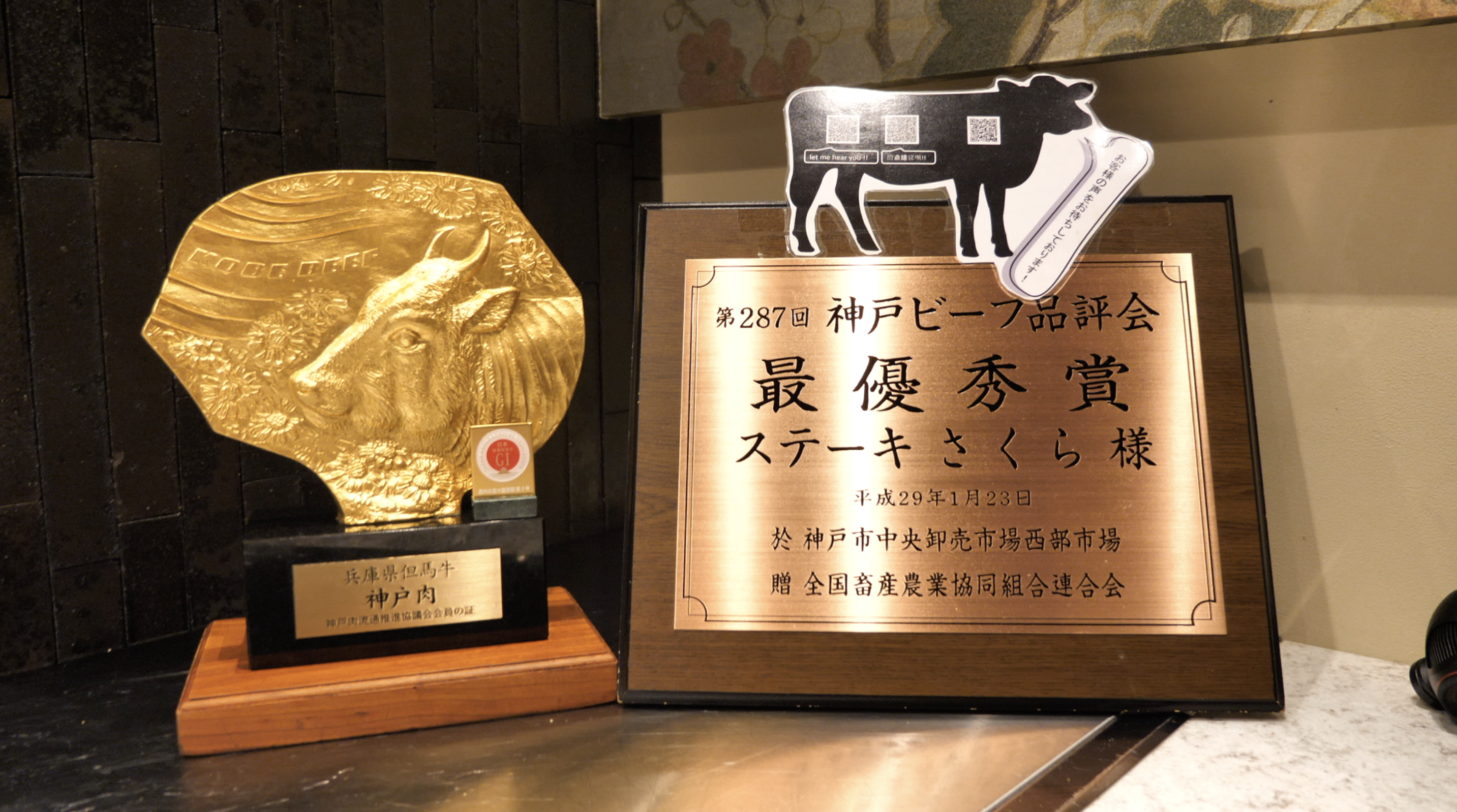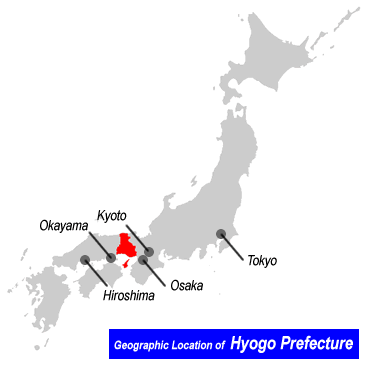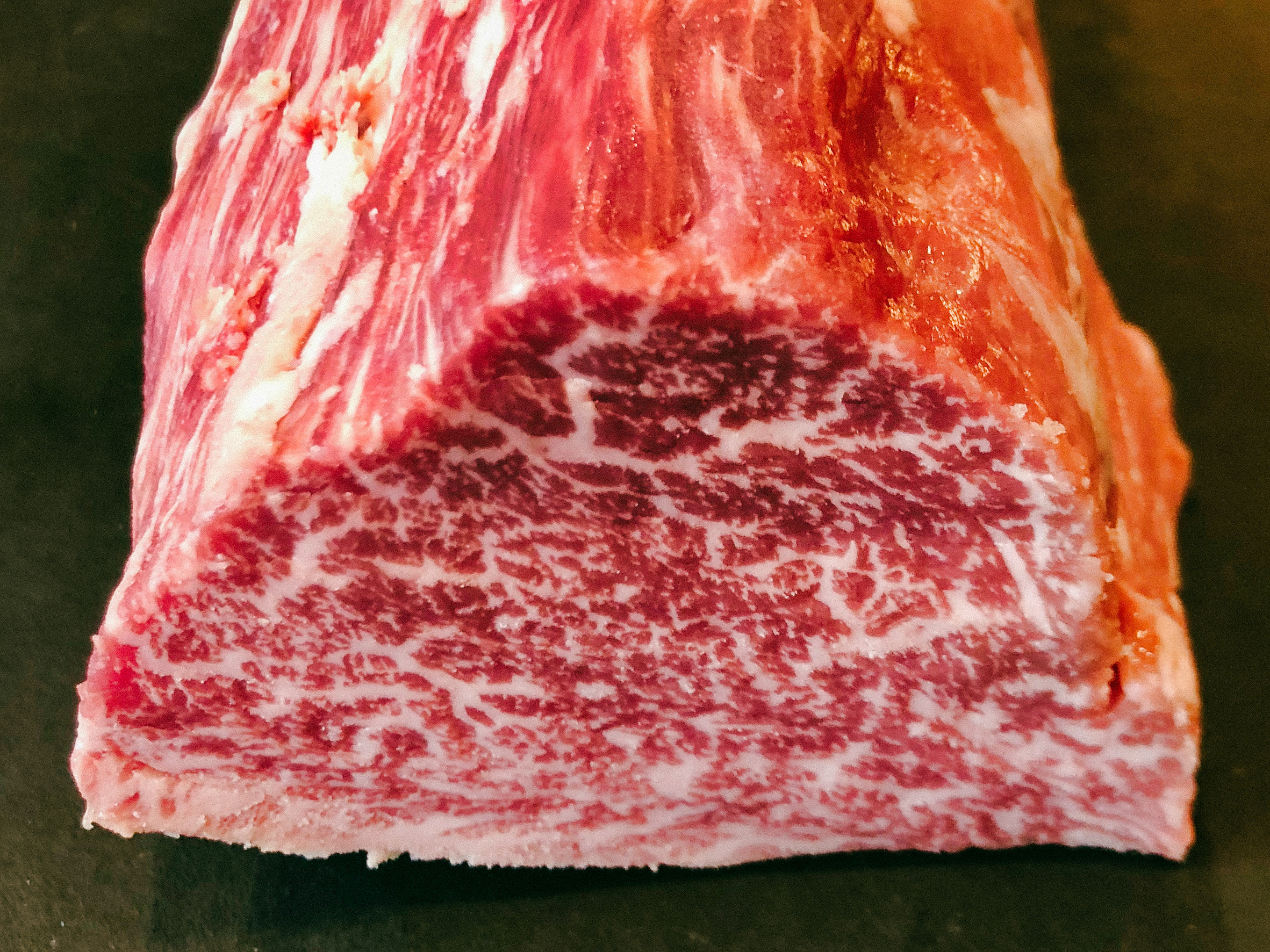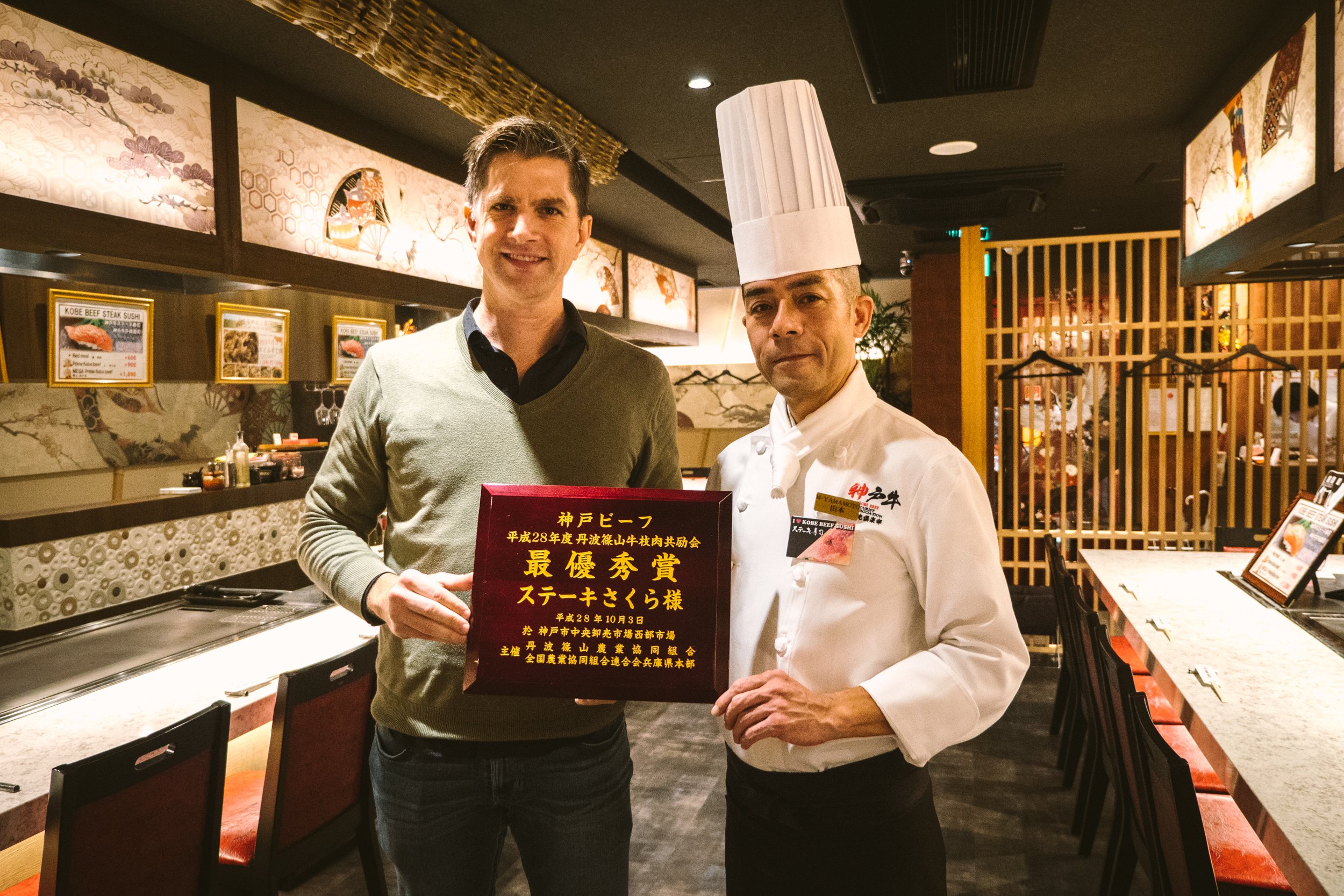And what are you missing out on if it's the only brand of Japanese beef you know?
The term “Kobe Beef” is one of the most famous — almost mythical -- terms in the world of food. It’s also one of the most misunderstood and misused.
Outside of Japan, the phrase “Kobe Beef” has become almost synonymous with “Japanese beef” or “Wagyu”, but it's not that simple. Let's break it down.
Wagyu = "Japanese beef"
Wagyu is just a word that means “Japanese Beef”. There are four breeds of Wagyu cattle that are native to Japan. Of these breeds, there is one that stands out as something truly remarkable: the Kuroge Washu.
It’s a breed with a unique genetic predisposition to marblizing its fat inside the muscle tissue. That incredibly marbled beef has become synonymous with “Kobe beef” and A5 Wagyu. It’s because of this special breed, the Kuroge Washu.
The ecosystem necessary to produce A5 Wagyu -- the gene pool, methods of raising the animals, the feed regimen, the organizations and expertise needed to rate and certify the beef correctly -- is completely unique to Japan.
Simply put: The highest grade of Wagyu gets a rating of A5. Some of it ends up being called Kobe, if it's from a particular part of Japan.

A5 Rank Kobe Beef in Japan
What exactly is Kobe Beef?
We’ve been to Japan several times to consult producers in Hyogo prefecture who raise Kobe Beef cattle, and have met with chefs in Kobe and Osaka who serve it. We've also spoken directly to the Kobe Beef Marketing Association in Kobe to understand what qualifies something as “Kobe Beef."
Check out our Japanese Wagyu Infographic
The first thing to understand is that “Kobe Beef” is a brand name maintained by the Kobe Beef Marketing & Distribution Promotion Association based in Kobe and formed to protect the integrity of the Kobe Beef brand name.
It's kind of like how you can't call any old cheese Parmeggiano-Reggiano -- cheese from Italy only gets that name if it's from the right region. It's a matter of Italian law.
The Kobe membership consists of producers, slaughterhouses, distributors, retailers and restaurants who pay the association membership fees in order to use the “Kobe Beef” name.
For beef to qualify as Kobe Beef, the following criteria must be met:
- the producer and slaughterhouse must be paying members of the Kobe Beef Marketing & Distribution Promotion Association
- the steer must be Tajima cattle (a term that effectively means Kuroge Washu-bred cattle raised in Hyogo prefecture)
- the steer must be born in Hyogo prefecture
- the steer must be raised and fed in Hyogo prefecture
- the steer must be processed at slaughterhouses in Kobe, Nishinomiya, Sanda, Kakogawa, or Himeji in Hyōgo Prefecture
- the BMS level must be 6 or higher on Japan’s 12-point scale
- the meat quality score must be a 4 or 5 (out of 5)
- the gross weight of beef from the animal must be 470 kg or less
A simple way to understand Kobe Beef is that it is a brand name for A4 and A5 beef that comes from Hyogo prefecture in Japan. In addition, beef from Hyogo prefecture that happens to achieve an A4 or A5 rating will only be called “Kobe Beef” if it comes from producers and processors that have paid to be part of their marketing association.
The weight requirement is also unique. Because the animals that qualify are on the smaller end, some say this has an affect on taste, others say it has no effect. One thing it definitely affects is cost — smaller animals tend to be less profitable and therefore prices have to be higher to make up for costs like processing.

Award-winning Kobe Beef at Steak Sakura in Osaka
Membership has its privileges...and costs
It’s possible for a single producer with a single herd of animals to raise some animals that qualify as Kobe Beef and others which do not from the same herd. This is a function of where the animals are harvested and how they are rated. For example, an animal that rates as A4 or A5 but which is sent to a processor that isn’t part of the Kobe Beef Marketing Association can’t earn the Kobe Beef mark.
As a practical matter, only the Kuroge Washu breed is capable of achieving an A4 or A5 rating — because of the intense marbling that only this breed can achieve — and there are many regions and brands of beef in Japan besides Kobe Beef that can achieve that level of quality.
Membership into the program is a rather non-trivial annual fee. The international brand recognition and the costs of membership are reflected in the priced paid by customers, of up to 2X the price of A5 Kuroge Washu from other brands.
A Brief History of Kobe Beef
Although cattle were raised in Japan for thousands of years, they were draught animals for a long time. Vegetarianism wasn't put on official pause until until the Meiji era, which began in 1868, when Japan opened up to the rest of the world and foreigners passing through the biggest cities demanded meat. Their own eating habits notwithstanding, Japanese producers began raising animals -- meat animals -- to meet the need of foreign diners. Vegetarianism was ended and producers raised beef animals for the Japanese market, as well.
Here's where the Kobe part comes in...
Yokohama was one of those emerging centers of trade between Japan and the rest of the world during the Meiji era, and it was full of foreigners who wanted to eat beef. Cattle and horses were both popular work animals in Japan, but cattle were raised in the southern parts of Japan and horses were used up north near Yokohama.
Thus, when foreigners working in Japan asked for beef, cattle needed to sourced from the south and shipped north from Kobe. When these foreigners tried this Japanese Kuroge Washu beef from the south and noticed the natural marbling and delicious umami taste, they were impressed. Since the beef was being shipped via the port of Kobe, that name become associated with this unique beef, even though the beef in fact came from all over the south of Japan, and just made a final pitstop in Kobe.
Then for a while, Japanese Wagyu and live animals were imported to the United States from Japan until both were banned from being exported. In 2012 small quantities of beef from Japan resumed export, after the U.S. lifted its own ban on imports.

Beware: Fake Wagyu abounds!
Real Wagyu actually imported from Japan is quite rare in the United States. The export of cattle and cattle DNA from Japan was banned many years ago, and remains banned. The export of beef resumed only recently (in 2012).
For perspective, as of November 2017, there are only 21 restaurants in the US which serve real Kobe Beef from Japan. It's served at the Wynn in Las Vegas where a one pound of it will set you back $880.
Countless restaurants and groceries use the terms "American Kobe,” "Kobe" or “Wagyu” to misguide consumers and to capitalize on the reputation of Kobe Beef and Japanese beef in general. Our advice if you see “American Kobe” on a menu or a label? Run!
There are in fact breeders in the US who raise Kuroge Washu cattle, ranging in purity from 100% "full blood" and on down to undocumented, unregulated cross-breeds of unknown purity (Wagyu-Angus cross, or "Wangus"). The USDA’s Agricultural Marketing Service provides certification services to beef producers including Wagyu and Wagyu crossbreds. Our advice if you see anything in the USA with "Wagyu" written on it is to ask the folks behind the counter if it's certified? What % Kuroge Washu is it? Make sure your purchase premium is justified.
Producers in Japan may be biased when they say there’s a huge difference between Kuroge Washu that’s been bred, raised, inspected and rated A5 in Japan versus anything you might find in the USA, including 100% (by DNA) fullblood Wagyu that was raised in the USA or Australia. They say it's because the gene pool of Kuroge Washu in the USA is quite narrow to begin with since Japan banned all DNA exports years ago, and only a small quantity ever got out of the country in the first place -- and because they've continued to improve the genetics in Japan through selective breeding practices.
Japanese producers and connoisseurs will tell you that nothing bred overseas can match the marbling, umami or overall quality of an A5 Wagyu from Japan. It's intuitive that the Japanese would have mastered the craft of producing A5 Wagyu as a high art over many decades, and that such expertise, experience and community does not exist outside of Japan.
I've seen (and tasted) some incredibly marbled 100% (by DNA) Fullblood Wagyu bred and raised in the USA, and I've taste-tested side by side with A5 Wagyu from Japan. Like wine, there are differences there are differences and individual tastes will vary. Try them both. Try them both and be your own judge!
Also, regarding Angus-Wagyu cross (where the percentage of Wagyu is less than 100%, usually far less and often unregulated) can also be amazing beef. In fact, for the American palate and way of grilling and consuming large portions, it may even be the preference for most people. A5 is a different thing entirely: so richly marbled, decadent (and expensive) that you just couldn't eat a huge steak all at once. When done right, Angus-Wagyu cross is like the great steakhouse Angus you are familiar with, but with even better marbling — more even than Prime, whereas A5 is an experience as much as a meal, to be savored in small bites and on special occasions.
Kobe Beef FAQ
Q: Do Kobe beef cows get massages?
A: Nope. Although all Wagyu ranchers in Japan use slightly different practices, and certainly there may be somewhere that "massage" is practiced, most likely this is just a mistranslation or misunderstanding stemming from the practice of brushing Kuroge Washu to remove dirt in order to reduce stress.
Q: Are Kobe and Wagyu beef the same?
A: No. Wagyu just means "Japanese cow". There are six breeds of Wagyu and four of them are native. Of these, the Kuroge Washu is unique in its ability to produce richly marbled beef, the best of which is rated A5. Kobe Beef is just a brand name of Kuroge Washu which comes from Hyogo Prefecture (near Kobe).
Q: Is Kobe beef in the US real?
A: The majority of the time when you see the word "Kobe" on a menu or in a store, it's probably not Kobe Beef (the brand of beef from Japan) nor is it even Kuroge Washu (the premium breed of Wagyu from Japan) or A5 Wagyu (the highest rated Kuroge Washu beef from Japan). Less than a dozen restaurants have Kobe Beef, and only a handful of outlets carry actual A5 Wagyu from Japan.
Q: What are the 8 restaurants that sell Kobe beef?
A: Actually there are now 21 restaurants that serve Kobe Beef (the real thing).
These are: The Wynn in Las Vegas, 212 Steakhouse in NYC, Alexander's Steakhouse in Cupertino and San Francisco, Shibumi in Los Angeles, Arsenal in San Francisco, Bazaar Mar in Miami, Bazaar Meat in Las Vegas, MGM in Las Vegas, Nick&Sam's Steakhouse in Houston, RPM Steak in Chicago, B+B Butchers + Restaurant in Texas, Jean Georges Beverly Hills, Gibsons Italia in Chicago, Castle Hotel & Spa in NYC, OMAKASE in San Francisco,
MINIBAR by José Andrés in Washington DC, and Roka Akor in Chicago and Houston. Keep in mind this doesn't mean it will always be on the menu.
Q: What is "American-style Kobe beef," or "American Kobe?"
A: Frankly, the term doesn't mean much. If you see "American Kobe" on the menu or on the label, our advice is to run. At best it's a slick marketing trick to try to get you to pay a lot more for something that's not worth the money. If you want real Kobe Beef, head to one of the restaurants above or look for "A5 Wagyu" and make sure it's coming from Japan.
In our view, the use of the term "Kobe" and smattering of Japanese characters on crossbred Angus beef from the United States is misleading.
When done right, Angus-Wagyu cross is like the great steakhouse Angus you are familiar with, but with even better marbling — more even than Prime. That's very different from the decadent, umami-packed experience of A5 Wagyu, which is rich and best savored in small quantities.
Q: Is Kobe Beef in the U.S. fake?
A: Most of the time, yes. When you consider the sheer number of times "Kobe" appears on some mystery beef that is certainly not actually Kobe Beef... Yeah. See above for a definition of Kobe Beef and for a list of the 21 restaurants that actually do carry authentic Kobe Beef from time to time.
Q: Is all Kobe Beef grass-fed?
A: Almost all beef in Japan consumes grass (roughage such as hay, rice straw, or silage) for at least some of their lives, but are grain-finished (on cereals such as corn and soybeans). The amount of time on roughage vs. grain mixes varies by farm and style of beef. For example, Olive Wagyu from Shodoshima is finished on a inawara rice straw and toasted olive peels for two months before harvesting.
Q: Why is Kobe Beef so marbled?
A: There are many factors that contribute to the intense marbling that Kobe beef and A5 Wagyu are known for. First is the breed of cattle used -- Kuroge Washu -- which has a unique genetic predisposition to marblizing its fat inside the muscle tissue. Second is the environment -- Japanese ranchers raise Wagyu cattle with the intent of minimizing stress as much as possible. Less stress means more fat and more tender meat. Lastly, they are fed a high-calorie diet consisting of roughage and grains so the animals gain weight.
Emerging Beef Brands in Japan
In Japan, there are over 300 brands of beef in addition to Kobe Beef, including other so-called luxury beef brands such as Matsusaka, Ohmi and Saga beef.
In addition, a "craft beef" phenomenon is currently taking root in Japan with the emergence of artisanal beef varietals such as Shinshu Apple Beef, Olive-fed Beef from Shodoshima, Osaka Umechan Beef, Hokkaido Snow Beef and many more.
All of these center on the Kuroge Washu breed and generally qualify only if they achieve an A4 or A5 rating -- much higher beef quality and marbling than American Angus beef is capable of achieving under any conditions.

Wagyumafia A5 Kobe Beef Chateaubriand

Steak Sakura in Osaka (Kobe Beef)